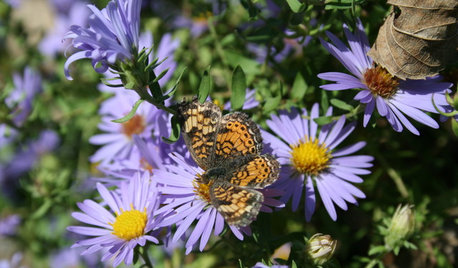Basic Aeschynanthus hybridizing question
snappyguy
12 years ago
Related Stories

GREEN BUILDINGWhy You Might Want to Build a House of Straw
Straw bales are cheap, easy to find and DIY-friendly. Get the basics on building with this renewable, ecofriendly material
Full Story
GREEN BUILDINGLet’s Clear Up Some Confusion About Solar Panels
Different panel types do different things. If you want solar energy for your home, get the basics here first
Full Story
KITCHEN DESIGN9 Popular Stovetop Options — Plus Tips for Choosing the Right One
Pick a stovetop that fits your lifestyle and your kitchen style with this mini guide that covers all the basics
Full Story
FURNITUREHow to Choose the Right Sofa Cushion
Shopping for a sofa? Here’s what to know about the basic cushion options — and the all-important test you must do for yourself
Full Story

LANDSCAPE DESIGN4 Tips for Creating a Small Garden That Welcomes Wildlife
Win over birds, bees, butterflies and neighbors with these design strategies
Full Story
KITCHEN CABINETSLearn the Lingo of Kitchen Cabinet Door Styles
Understand door types, materials and cabinet face construction to make the right choice when you shop
Full Story
KITCHEN APPLIANCESFind the Right Cooktop for Your Kitchen
For a kitchen setup with sizzle, deciding between gas and electric is only the first hurdle. This guide can help
Full Story
ARCHITECTUREModern or Contemporary Architecture? The Interiors Edition
See how one expert distinguishes between two popular camps of interior architecture. Do you agree with his choices?
Full Story
ARCHITECTUREHouzz Tour: Towering Above London in a 7-Story Home
Maximizing see-forever views, the U.K. couple who converted this water tower are aiming high
Full Story





zen_man
keking
Related Professionals
New Bedford Landscape Architects & Landscape Designers · Wrentham Landscape Architects & Landscape Designers · Signal Hill Landscape Architects & Landscape Designers · Burlington Landscape Contractors · Darien Landscape Contractors · Dudley Landscape Contractors · Lynn Landscape Contractors · Waldorf Landscape Contractors · Roselle Park Carpenters · Peoria Fence Contractors · Arroyo Grande Fence Contractors · Downers Grove Fence Contractors · Fountain Fence Contractors · Grandview Fence Contractors · North Miami Beach Fence ContractorssnappyguyOriginal Author
zen_man
keking
zen_man